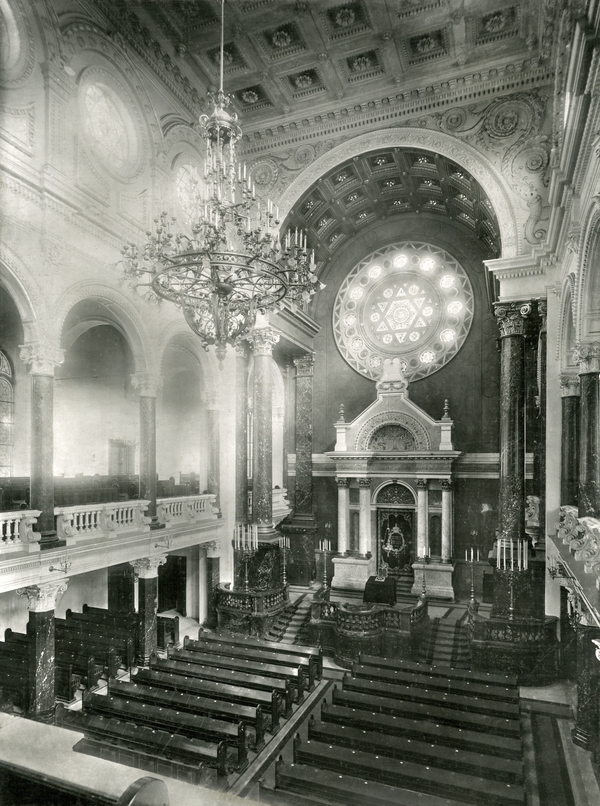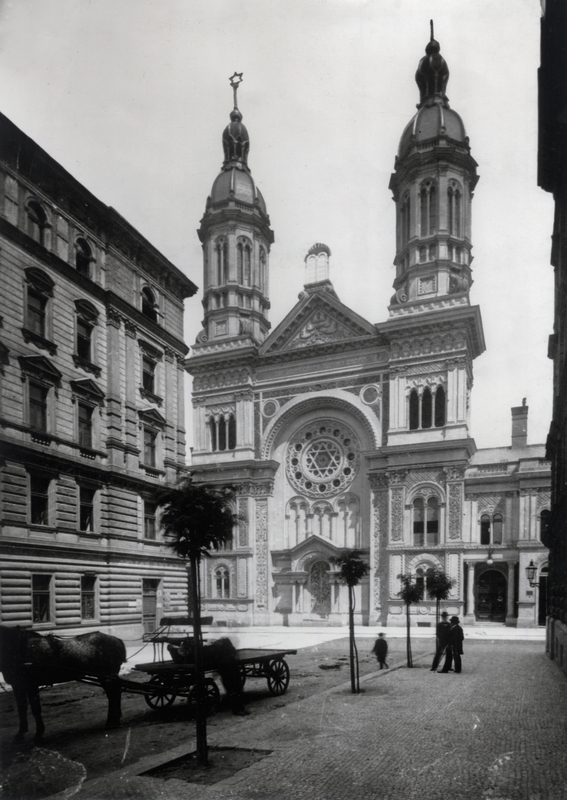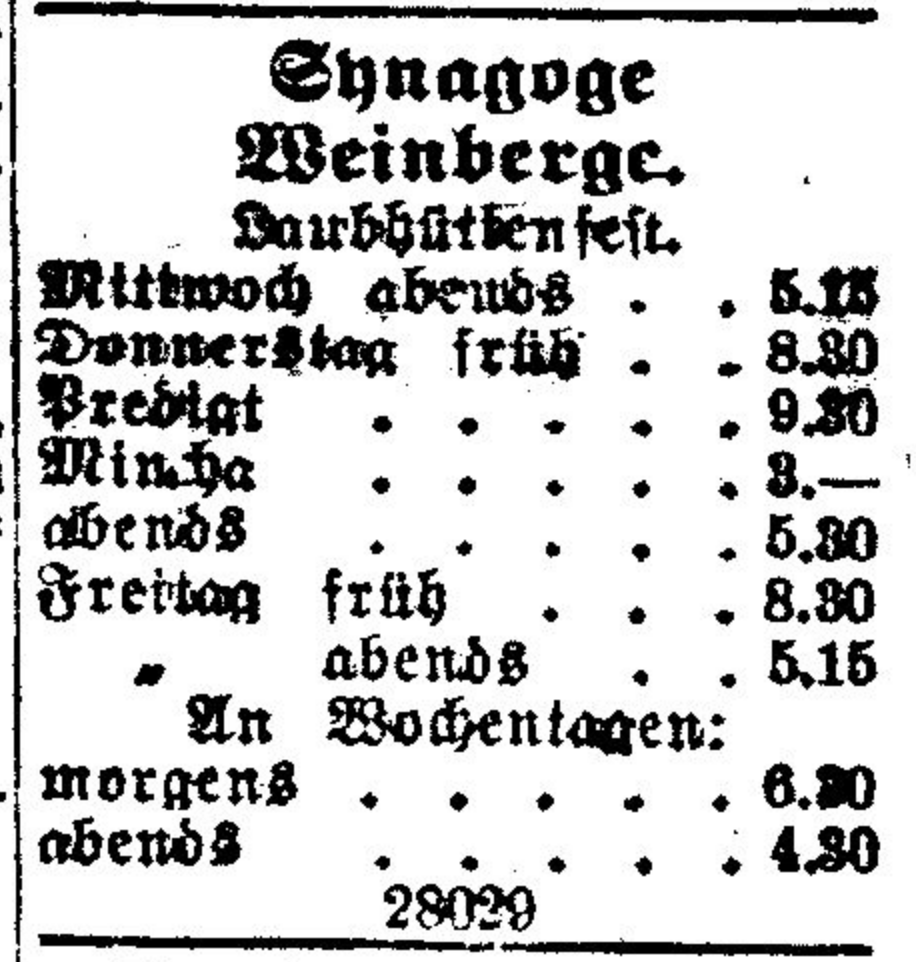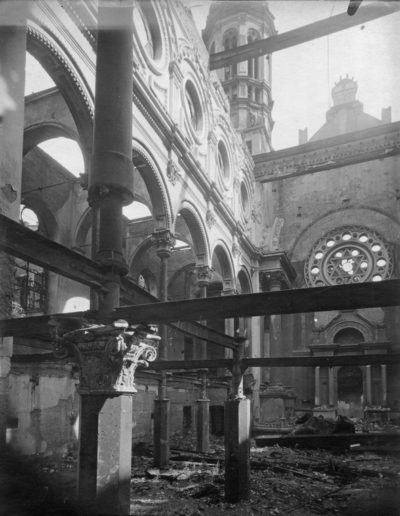Being an old city, Prague has and had its share of beautiful structures, some of which unfortunately no longer exist. One of the buildings that stands no more, but is fondly remembered, is the Great Synagouge of Vinohrady.
The Great Synagogue of Vinohrady was one of the largest synagogues of the world. It had a capacity for over 2,000 worshippers, representing one of the largest Jewish communities in Central Europe before the Holocaust.
It stood in the upper-class neighborhood of Prague on Královské Vinohrady (“Royal Wineyards“) between the years 1896–when it was opened festively on Rosh Hashana 5657 (the Jewish New Year 5657 – 1896)–until 1951, when it was–against the protests of the Jewish community – blown up and bulldozed away by the communist government.
Plans for this humongous structure were designed by one of the most prestigious and top-class synagogual architects of Europe of that time, the famous Viennese-based Wilhelm Stiassny. He worked on prestigious projects for rich Jewish communities, such as Prague, Vienna or Teplitz.
The building represented the emancipation of the Jews of Prague and their blending into the Czech society at the turnover of 19th and 20th centuries.
Interestingly enough, at the time of the building of the Vinohrady Synagogue between 1894 and 1896, he also worked on the nearby Jubilee Synagogue of the New Town of Prague. That synagogue still functions as an active synagogue of the Prague Jewish Community.
The Vinohrady Synagogue in Sázavská Street was conceptualized as a counterpart not only to the nearby main church of the quarter, but even as a counter-dominant to the Prague Castle, being visible on the opossite site of the Vltava River. It was a symbol of Jewish emancipation from the ghetto–tall, ornate and proud.
The main façade on Sázavská Street was dominated by two slender octagonal towers with lanterns, a massive rosette window with David’s star, and tablets with the Ten Commandments at the top of the tympanon. The eastern façade had a blind portal. The real entrance to the synagogue and to the galleries was through corridors in the adjecent buildings of the rabbinical house and the Jewish school.
The interior of the synagogue represented a large basilica space with arcade galleries for women on three sides of the main hall. The pillars and galleries were lined with white, grey, pink and red marble stones. Galleries were supported with massive yet humble Corinthian columns. The seating was linear, but women and men were still separated during the service.
The synagogue employed a reformed rithe, with an organ and a choir. The rabbi was Dr. Gustav Weiner, one of the leading proponents of the Czech-Jewish movement. The shamas was Eduard Wohryzek. He was the father of Frank Kafka’s lover, Julie Wohryzek.
Many more important personalities were associated with the synagogue. The Jewish Community at this neighborhood represented one of the largest and most affluent in the entire country. Out of approximately 50,000 Jewish citizens of Prague in the 1930s, about a half of them lived at Královské Vinohrady.
The synagogue did not function for long – in fact, it only existed for fifty five years. It began during the last years of the of Habsburg Monarchy and the first years of independent Czechoslovakia. The synagogue had survived the Nazis – unlike most of the Jewish residents who used to pray there. It was only at the very end of WWII that it got an accidental hit during the Allied bombing of Prague in February 1945.
Since it was converted into a large warehouse of confiscated Jewish property (mostly furniture), it burned out. The fire could have been easily extinguished, but the German occupation forces prevented on purpose the local Prague Fire Department from doing so. They left the building to burn.
After the liberation, it still could have been restored or converted for another use that fitthe needs of the post-war Czech society. There were plans to turn it into a gym, an old-age home for Holocaust survivors, an orphanage, a kindergarten – or even a hospital or a cinema. However, due to the communist régime having Antisemitic sentiments, no one was interested in sparing this valuable building which was once a part of the dominating structures of the city’s skyline. It was one of the largest sacral structures of Europe and probably also the largest synagogue of the world of that time.
In the post-war years, an elementary school was erected on the area and still serves its purposes until today. We can appreciate the vastness of the original building of the synagogue by comparing it with the size of the contemporary building, even more so if we walk inside. It was not until 1995 that a humble memorial, a reminder of what once stood there, was placed onto the left of the school’s entryway.
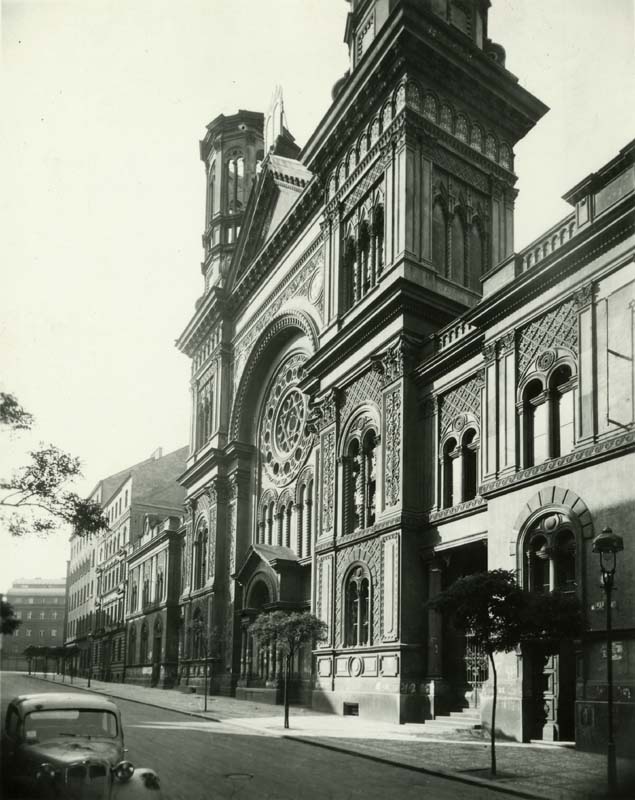
So far, historians and researchers have not found much traces from the building. All that is left for now are a couple of original floor tiles, several fragments of columns, some original prayer books and other documents such as photographs – and testimonies of people who still remember the building.
Prague is a city that is rich with Jewish history, although many structures are no longer with us today. Despite this, the legacy lives on. This makes it an ideal place for a Jewish heritage tour after a kosher river cruise in the River Danube. Fortunately, we have a Post-cruise Prague tour if you are interested.
For further inquiries, you can refer to our Danube cruise 2018 overview here: https://kosherrivercruise.com/danube-river-cruise-2018

